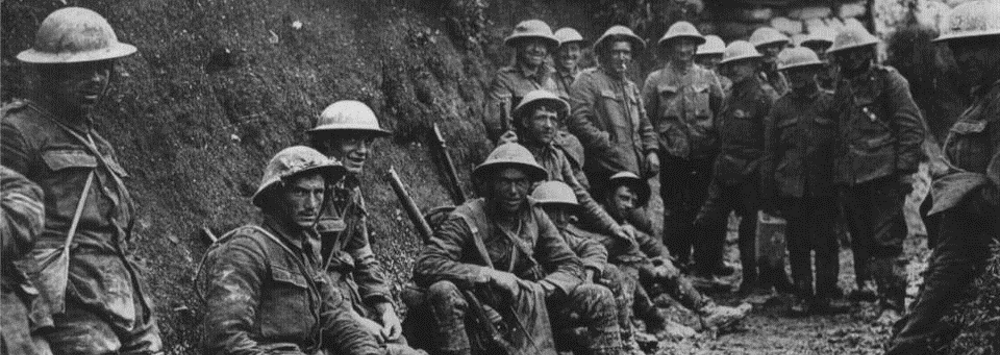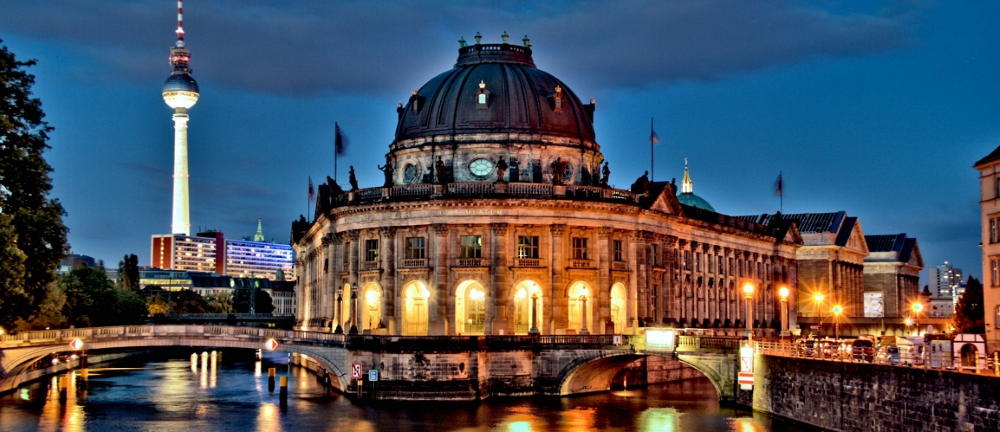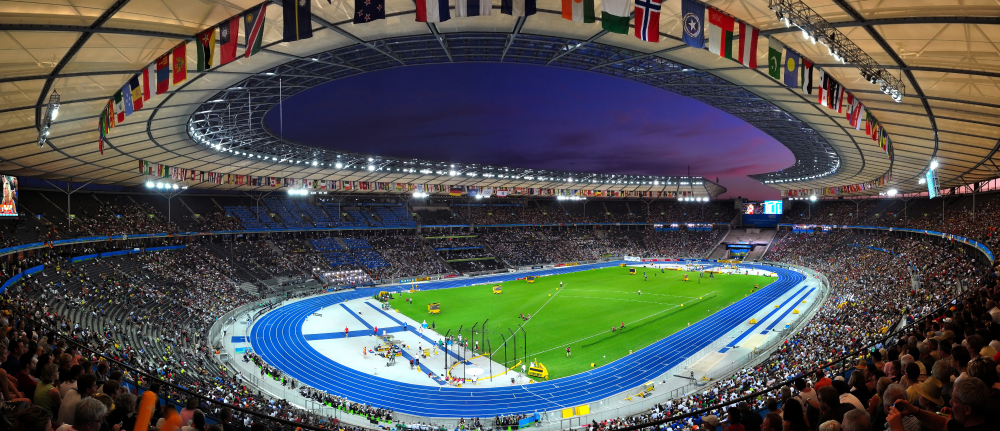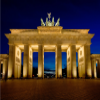Berlin - a real hipsterby and also a goldmine of opportunities close
Berlin is easy to get to, and it is a clear advantage compared to many other European cities. Unfortunately, it also means that it is our experience that it can be difficult to entice an entire school class trip. But with a little lobbying can succeed - and it should not really be difficult for Berlin has infinitely more to offer.
Discover Berlin in the coolest way 
Transportation and hotel
One of the things one among others can turn to when you have to sell Berlin for pupils - and we here at Student Guide has good experience with - the price of transport and hotel. Consider, for instance. take the train down there. It only takes about 6 hours. Alternatively, you can even rent a bus. Hotel accommodation in Berlin can be done cheaply and even to a good quality. Moreover, many of the good hotels relatively centrally so that students can walk into town and back to the hotel without the use of the otherwise well-functioning metro. One can as a teacher choose whether it is a selling point, you want to use to students.
The historical side of Berlin
Berlin is an ancient city and has over the last hundred years been the center of Europe, if not world history. It would thus be directly mixed up col- if not on his program devotes plenty of time to show students some of the many fine historic things there are to see in Berlin.
DDR Museum:
DDR Museum is a good place to start. It is a great museum that attempt to involve all the latest museological tricks. Thus, the DDR Museum everyday life in East Germany under socialism. The idea is that you are allowed to experience the DDR as it was before the fall of the wall. Therefore, it is possible to explore drawers, cupboards, watch television in an East German living room, take a walk in the GDR cinema - or a ride in Trabien through an area with typically plattenbauarkitektur.
Hohenschönhausen:
If the theme for your study is DDR, it would be natural to take on to Hohenschönhausen, who was one of the GDR's biggest secrets was STASI prison Hohenschönhausenr; Prison was top-secret and top-assured. On the map of East Berlin prison area not even marked - it was only STASI people who knew about the prison's secret location. Today it stands prison almost as the day the wall came down. I can see everything from water torture chambers were decorated in the 1950s, to the more modern "traffic light" system, which should keep prisoners completely isolated from each other, and much more. The guides are often old prison, which one must say gives a visit to an additional angle. The visit makes an impression on the young people and gives them a different understanding of why the GDR still take up so much for the Germans today.
Checkpoint Charlie:
For this theme naturally includes a visit to the "hyped" Checkpoint Charlie. It may at certain times of year to be a tourist trap, but it - and the accompanying museum, is definitely worth a visit.

other classics
Visit at these three sites fit very well into an interdisciplinary course between German and history. Thus, students get both a sense of the historical development and also for Germany's past and significance in Europe today.
If you need to see some more encouraging but still deeply fascinating, we believe here at Student Guide, the Berlin Underworlds is worth a visit. The tunnels under the Berlin opened to the public in 1997. The tunnels are excavated back in 1650 by German brewers who used them to keep the beer cold. In the corridors there found everything from burial places, secret shelters and sewers - at an airplane factory.
There offered three different tours: "Dark Worlds", which focuses on tunellernes role as shelters during the 1st and 2nd World War. The other tours are "From anti-aircraft towers to piles of rubble" (only in the period April-October), This tour takes you through the ruins of the former anti-aircraft tower in Humboldthain Park. You get an idea of how life has been in these big fortresses during WW2. The third tour is: "The underground, bunkers and the Cold War". On this tour you visit several shelters that were used both during WW2 and the Cold War.
We can definitely recommend that you visit this as it often is something that students could not dream of visiting on their own.
WW2
Jewish Museum:
The Jewish Museum exhibition consists of different both permanent and temporary displays. For the permanent exhibition has chosen an unusual perspective in the review of the 2000 years of Jewish history; the German-Jewish past appears as interpreted by the Jewish minority itself. From this perspective, presented famous historical events in a new - and more complex light. This part of the museum lends itself greatly to talk about historical consciousness and source criticism. You also get an insight into individuals and specific families' fates. The exhibitions are continuously updated and new additions integrates all the time. It is an interesting museum - and in the context of the growing anti-Semitism in Europe! Remember to spend time on the controversial memorial to Holocaust doorstep.
Reichtag:
Reichstag is the gathering point for the Government of Germany Bundestag. The building itself was designed by Paul Wallot in 1884-97. In connection with the restoration of the building in the 1990s determined the Danish designer Per Arnoldi color composition of the Chamber and the 19 other rooms. After a guided tour you have the opportunity to visit the famous elliptical glass dome, designed by Sir Norman Foster. Furthermore, you can visit to the rooftop terrace, which offers a magnificent view of Berlin. We recommend that before a visit to the Reichstag show students historical pictures of the building. Then they can get a sense of how this fascinating building has been a spectator to some of the most important events in modern European history.
Sachsenhausen:
About 35 km north of Berlin is "National Mahn- und Gedänkstätte Sachsenhausen". Sachsenhausen were Nazi concentration camp from 1936 to 1945 and housed more than 200,000 prisoners from 47 different countries, including many Danish resistance fighters. It is the first concentration camp, which was built after the Reichsfuhrer Heinrich Himmler was the Gestapo chief in 1936th Thousands of people died in the camp due to starvation, disease, forced labor and abuse - or were the victims of SS 'systematic extermination. Yederligere died several thousand during the death march to Schwerin, which took place in April 1945th Today it is only a small part of the camp, which is preserved, but the place is still a major historical attraction that gives a good impression of the horrors and killings that took place in the camp. Thus, it is inter alia possible to visit the execution ground, barrack 39, the kitchen and the commandant's residence.
It's a good idea to plan it carefully from home, so that students know what they're getting into, and so they can see the camp as part of the larger Nazi jew extinction.

The classic museums
British Museum in London especially for the Elgin Marbles - are often accused of theft of art objects. But those who make this claim should in fact take the classic museums in Berlin for this hidden art treasures that will matter! Many do not know - or forget - many of archeology fathers were German, and it is evident in Berlin's impressive classical museums. It's cool that you need only go to Berlin to see the beads from ancient Egypt, Greece and Rome. The museums are all on the "Museum Island", located between two branches of the River Spree is Berlin's oldest and most famous museum complex. It contains five museums; Pergamon Museum (antique monumental architecture as well (Near Eastern and Islamic art), Altes Museum (antique collection), Neues Museum (Egyptian and prehistoric collections), Alte Nationalgalerie (painting and sculpture from 1800) and Bode Museum (European sculpture from the Middle Ages to Baroque, Byzantine art and a coin collection).
Science
If you have to travel with a class that has a natural scientificstrange study has Berlin certainly something to offer. Consider, for instance. visit the scientific laboratory Gläsernes Labor, wherein I have an exciting and different experience; In the experiment in groups of smaller DNA experiments. Part of the project involves you, as detectives must solve a fictional murder using DNA analysis. Gläsernes Labor opened in 1999. It is one of few places in the world where students themselves are allowed to experiment in a laboratory. Therefore, we here at Student Guide no doubt that this is something we shall see, next time we are in Berlin with a class.
Deutsches Technik Museum Berlin:
Deutsches Technik Museum Berlin 1982 takes you on a journey through time and is an absolute must if you love it electronic. The museum contains more thematic exhibitions showing old and new technologies in areas such as computer, TV, radio, steam engines, trains, model airplanes, model boats, clothing and textiles. All means of transport by land, sea and air are represented. The museum also Science Center Spectrum, which has a rich selection of demonstration experiments and "hands on" experiments. A very traditional and experimental museum at the same time.
Berlin Zoo:
Technically, we could also call a visit to Berlin Zoo for science. Here are a myriad of different species - also pricey, you do not normally see. A visit here used to be a hit ... So long as you do not just focus on that more of the animals perhaps could benefit from a little more space and stimulation .... Just remember to allow yourself ample time to visit, when the garden is huge. Moreover, it is best to visit in good weather when you go out all the time.
Company visits - if the study trip must have a mercantile direction.
In January 2010, closed Ritter Sport opened the doors to their business in Berlin. The visit starts with a tour of the 3D cinema, where you have a history of "branded" Ritter Sport and hear about the cocoa bean way from bean to the finished chocolate.
Afterwards you can visit the delicious chocolate factory. In small workshops will I here set to make your own chocolate from scratch, under the guidance of the resort staff. The visit can be connected with a session in the chocolate shop - or you can relax in the "chocolate lounge".

Olympia Stadium:
This is perhaps what one might call an unconventional business visit, but is nevertheless worth a visit and can easily be put into this context. Facility was built for the Olympic Summer Games in 1936. Today, this stadium accommodates 75,000 spectators and also is home to the football club Hertha Berlin.
In connection with the World Cup in 2006 was Olympiastadion carefully restored and it was equipped with an impressive roof which one has the impression of "hovering" over the crowd. I can often through your agency book a guided tour.
Things that should not be seen due. Professionalism, but because it is "fucking fat" according to the students.
Today, Berlin is the most young art and culture throughout Europe, and it attracts young people from around the world. The creative, artistic life is completely in line with what one finds in London and Paris.
Much more than just history:
London is often highlighted as one of the best cities to shop or see musicals. But in the context, Berlin is not forgotten. Here you can see a lot of different muscials such as Blue Man Group, Lion King and many others. Berlin is also extremely suitable to bleed mulvarpeskindet. Here are many shops - on the known international branded stores but also the local German. A visit to Berlin should also include a visit to the impressive Kurfuerstendamm and the popular Kadewee. Kaadeewee is an impressive shop where one especially should visit their Food Court where you go from one special delicacy to the other. A visit to the TV tower, which is Berlin's landmark, also tends to make happiness.
Finally, before we here at Student Guidelets you escape, we'll remind you that you have not really visited the German capital until you've gone under Der Linden and down to the Brandenburg Gate.
In conclusion
Here is just a small part of what Berlin has to offer, but this is what we have had good experiences with. Berlin can be recommended!
Find the travel options that fit your budget here



